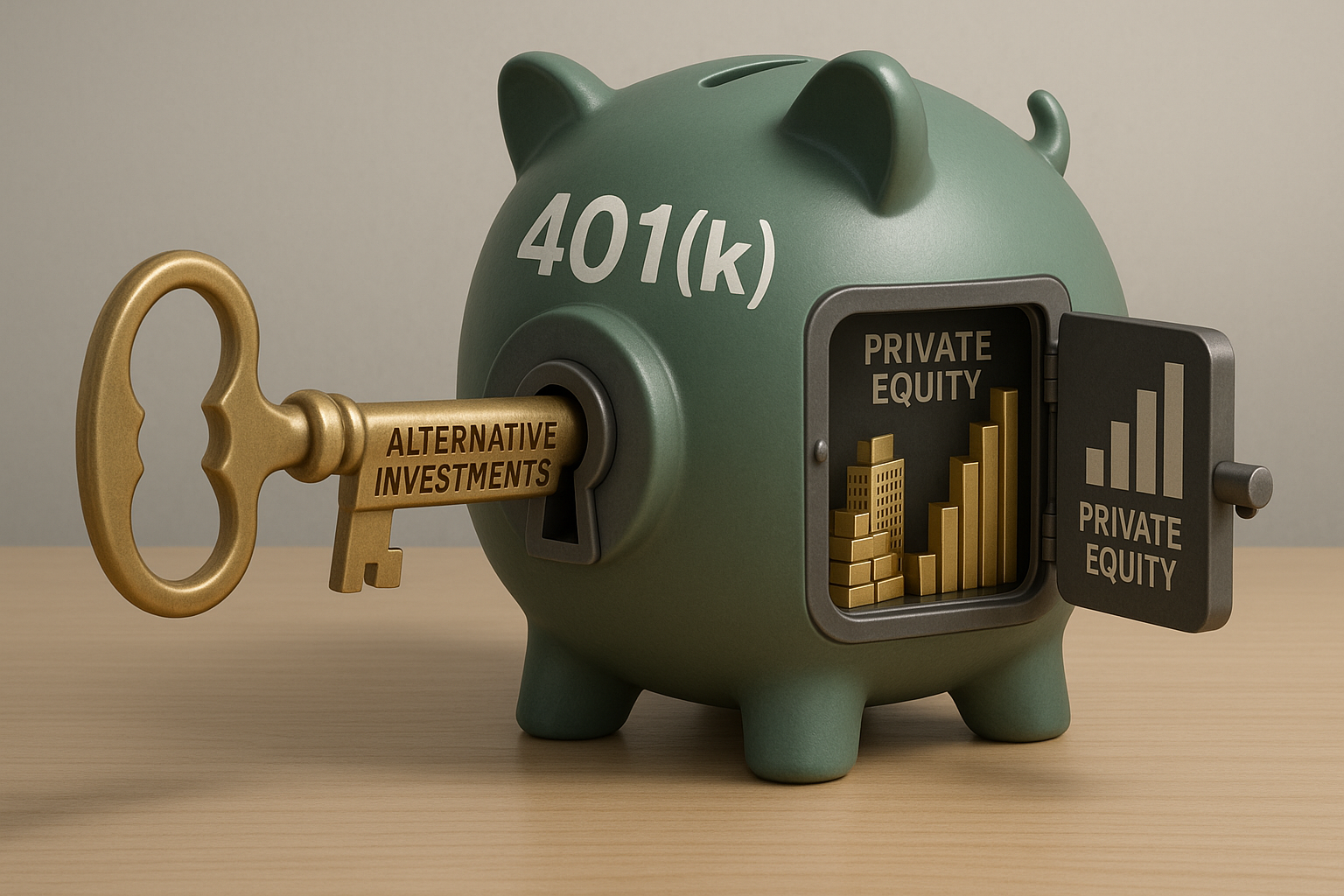Former President Trump's executive order flinging open the 401(k) doors to alternative investments has the retirement world in a tizzy. The sales pitch? A modest-sounding 0.5% annual return boost that—through the miracle of compounding—supposedly balloons to roughly 15% more retirement cash over a 40-year career.
Not too shabby, if true.
I've been covering retirement policy for years, and this feels familiar—another round of financial democratization that may or may not deliver on its promises. The retirement landscape is littered with such well-intentioned innovations.
Look, the concept makes intuitive sense. Elite university endowments have been gorging on private equity returns for decades while regular folks have been stuck with the investment equivalent of the kids' menu: stocks, bonds, and maybe—if your plan is fancy—some real estate investment trusts.
"This represents a fundamental shift in how Americans can invest for retirement," said Margaret Williams, retirement policy director at the National Association of Plan Advisors, when I called her for comment. "Whether that's ultimately good or bad depends entirely on the implementation."
The timing here is... interesting. Private equity has enjoyed a spectacular run. But asking whether the next 40 years will mirror the last 40 is like wondering if bellbottoms will make another comeback—possible, but I wouldn't bet my 401(k) on it.
There's something almost comical about this whole scenario. For years, private equity firms have been busy taking public companies private, removing them from ordinary investors' reach. Now they're essentially saying, "Hey there, Average Joe, we've got a special back door just for you!" (Through your retirement plan, with fees attached, naturally.)
Who stands to benefit most? A few likely candidates:
Private equity behemoths get access to a staggering new pool of capital—one that's wonderfully stable and patient by design.
Plan administrators suddenly have shiny new products to offer—with fee structures that'll make their shareholders grin.
Companies can brag about providing "institutional-caliber" investment options to employees. Great recruitment tool, that.
But that promised 0.5% outperformance deserves a raised eyebrow or three. It's suspiciously precise—not so ambitious as to strain credulity, yet meaningful enough over decades to silence skeptics.
Having followed private equity performance data since my early reporting days, I can tell you the historical premium over public markets has typically been larger. But that was before the sector became crowded with eager capital and bloated valuations. And before potentially trillions in retirement dollars came flooding in.
The practical hurdles aren't trivial. Alternative investments are notoriously illiquid—try selling a stake in a private company or real estate development on a Tuesday afternoon when the market takes a dive. Yet 401(k) plans operate in a world of daily valuations and participant expectations of quick access to their money.
That fundamental mismatch will require some creative financial engineering to solve. And if there's one thing we've learned from the 2008 crisis (and several before it), it's that financial engineering often creates as many problems as it solves.
"We're essentially trying to stuff a square peg into a round hole," one plan administrator told me off the record. "We'll make it work because there's money to be made, but there will be compromises."
Those compromises worry me.
Will regular retirement savers get the real deal, or the watered-down version? Will fees eat away that promised outperformance? Will disclosure be transparent enough for participants to understand what they're actually buying?
The history of financial innovation doesn't provide much comfort. What typically starts as sophisticated products for informed investors often morphs into mass-market versions that keep the fee structure but dilute the benefits.
Some industry veterans I spoke with see this as the natural evolution of retirement investing. Others see it as a last-gasp cash grab from a private equity industry facing headwinds.
In fairness, expanding investment access isn't inherently bad. But there's an unshakable irony here—this comes at a time when many Americans still don't save enough for retirement in the first place. It's like offering premium gas to someone who can barely afford a car.
Wall Street rarely misses an opportunity to create new revenue streams from a $6.5 trillion retirement pool. And that, perhaps more than any promised return enhancement, might be the most predictable outcome of this executive order.




